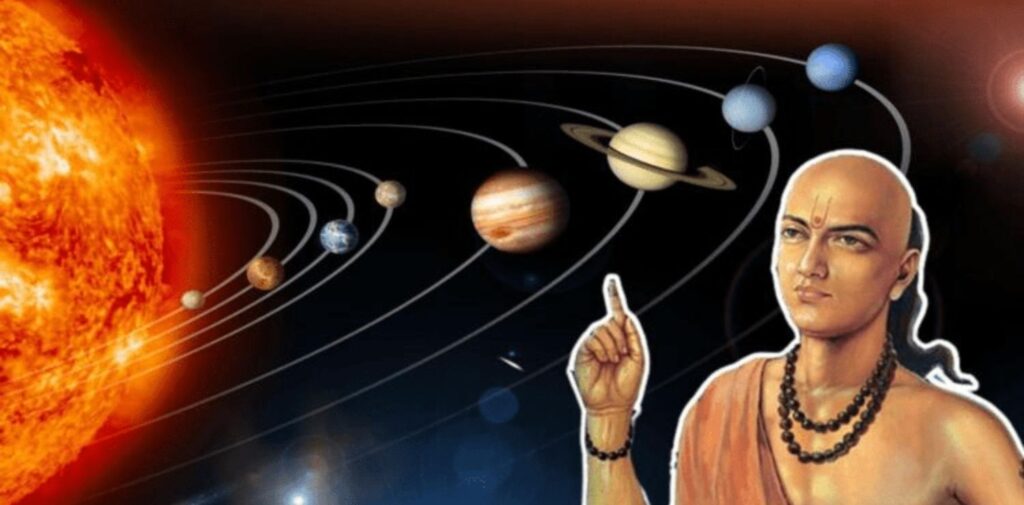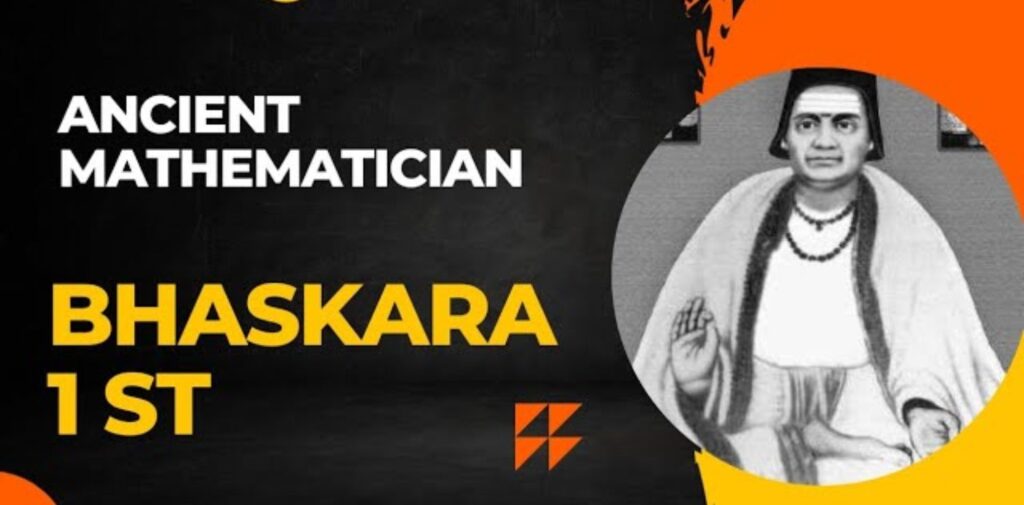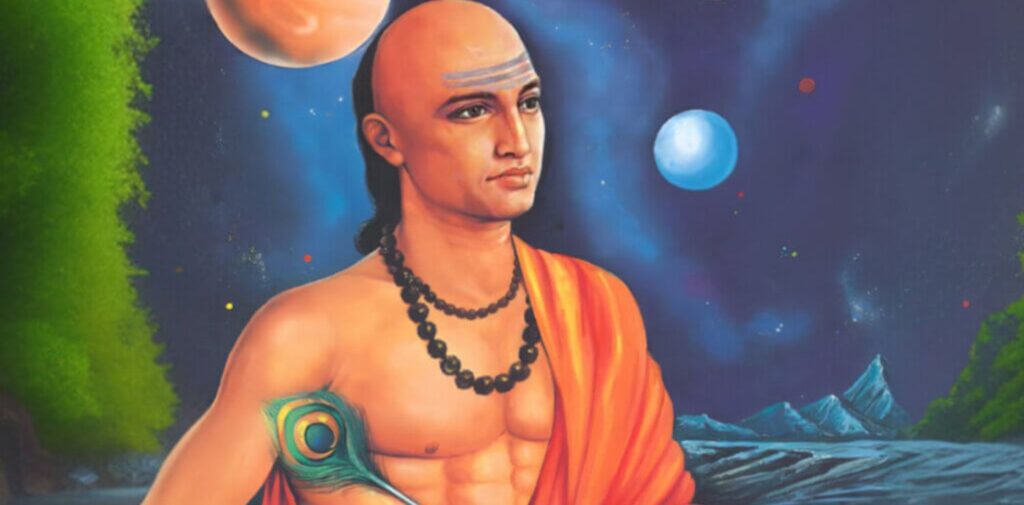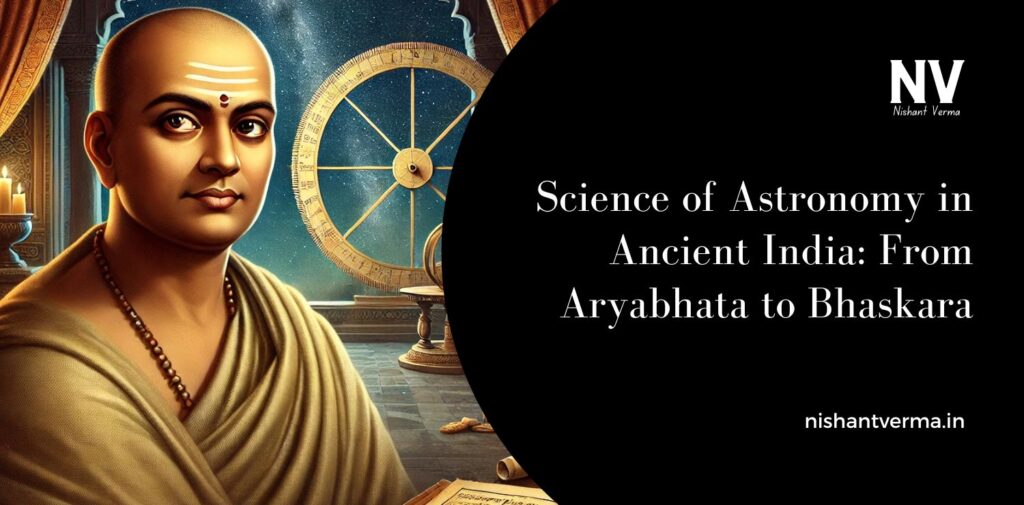India has always been a land of great discoveries and inventions. Even in ancient times, Indian scholars were making important contributions to the world of science. One of the areas where they excelled was astronomy – the study of the stars, planets, and everything in space. Ancient Indian astronomers were very interested in understanding how the universe worked. Their discoveries and ideas have influenced the development of science for centuries. In this article, we will learn about the science of astronomy in ancient India, focusing on two of the most famous astronomers: Aryabhata and Bhaskara.
The Early Beginnings of Indian Astronomy
Astronomy in ancient India was not just about looking at the stars for fun; it was connected to many important things, such as religion, calendar making, and agriculture. The Indian people were very careful about tracking the movement of the sun, the moon, and the stars because it helped them know when to plant crops and celebrate important festivals.
One of the earliest mentions of astronomy in India can be found in the Vedas, which are some of the oldest sacred texts of India. These texts talked about the stars and planets, and they helped lay the foundation for the study of astronomy in ancient India.
As time passed, Indian astronomers began to study the sky more closely. They created mathematical tools and formulas to understand the movement of the heavens, and they built observatories to watch the stars and planets.

Aryabhata: The Pioneer of Indian Astronomy
One of the most famous and important astronomers in ancient India was Aryabhata. He lived around 1,500 years ago, in the 5th century, and is often called the father of Indian astronomy. Aryabhata’s work was so important that even today, scientists still talk about his ideas.
Aryabhata was a brilliant mathematician and astronomer. In his book, Aryabhatiya, he wrote about many different topics, including the movement of planets, the stars, and the earth itself. One of Aryabhata’s greatest discoveries was about the earth’s rotation. He was one of the first to suggest that the earth spins on its axis, which causes day and night. Before this, people thought that the earth was flat and that the sun moved around it.
Aryabhata also made important observations about the moon. He correctly explained that the moon shines because it reflects the light of the sun, which was a big discovery at the time. He also described the phases of the moon, such as the full moon and the new moon.
Another significant contribution by Aryabhata was his explanation of eclipses. He was one of the first to describe lunar eclipses and solar eclipses as natural events caused by the shadow of the earth falling on the moon or the moon blocking the sunlight from reaching the Earth. This was a big step forward in understanding how eclipses happen.
Aryabhata also made calculations about the length of the year. He correctly estimated that a year was about 365.2588 days long. His estimate was very close to the modern value, showing how advanced his knowledge was.

Bhaskara I and Bhaskara II: Masters of Astronomy
After Aryabhata, two other great astronomers made important contributions to Indian astronomy. These were Bhaskara I and Bhaskara II.
- Bhaskara I: Bhaskara I was a follower of Aryabhata and lived around the 7th century. He wrote important books that helped explain Aryabhata’s ideas in a clearer way. Bhaskara I was famous for his work on calculating the position of planets and explaining astronomical constants, which are numbers used in math and science to make accurate calculations. One of Bhaskara I’s key works was his commentary on Aryabhata’s Aryabhatiya, where he explained Aryabhata’s ideas more deeply. Bhaskara I also made important calculations related to solar eclipses, lunar eclipses, and the movements of the planets.
- Bhaskara II (Bhaskaracharya): Bhaskara II, also known as Bhaskaracharya, was one of the most famous astronomers in Indian history. He lived during the 12th century and is considered a giant in the fields of astronomy and mathematics. His book, the Siddhanta Shiromani, is one of the greatest works of ancient Indian science.
In this book, Bhaskara II explained many ideas that are still important today. One of his most famous discoveries was about the movement of planets. Bhaskara II correctly explained how the planets move in the sky and how their movements are connected. He used mathematical formulas to predict the positions of planets and stars with great accuracy.
Bhaskara II also worked on calculating the time taken by different planets to move around the sun. He provided detailed calculations on the orbital periods of planets and how long it took for the moon to complete its cycle. His work was far ahead of his time.
One of Bhaskara II’s famous contributions was to algebra and geometry. He developed important formulas used for solving equations. His work was important not just in astronomy but also in mathematics.
Other Contributions to Indian Astronomy
Apart from Aryabhata and Bhaskara, other Indian scholars also contributed to the development of astronomy. For example, Varahamihira, who lived during the 6th century, wrote the Brihat Samhita, a book that included information on astronomy, astrology, and even topics like rainfall and plant growth.
Brahmagupta, a mathematician and astronomer from the 7th century, is famous for his work on zero and negative numbers, which were important for making accurate astronomical calculations. He also explained how to calculate eclipses and worked on understanding the movements of planets.

The Legacy of Science of Astronomy
The work of Aryabhata, Bhaskara, and other astronomers had a lasting impact. Their contributions to the science of astronomy helped shape the study of the stars and planets in many parts of the world. Their ideas were passed on to scholars in Persia, Arabia, and Europe.
Many important astronomical terms in languages such as Arabic and Persian come from the names of Indian scholars. For example, the word “zero” came from the work of Brahmagupta, and many mathematical terms used in algebra and geometry were influenced by Indian scholars.
Today, we can see the incredible achievements of these ancient astronomers in the way we understand the universe. Their discoveries about the earth’s rotation, the moon, eclipses, and the movements of planets were incredibly accurate for their time and have helped build the foundation of modern astronomy.
Conclusion: The Brilliant Minds of Ancient India
The ancient Indian astronomers, from Aryabhata to Bhaskara, were some of the most brilliant minds in the history of science. They made groundbreaking discoveries about the universe long before modern telescopes and space missions. Their work not only helped to improve our understanding of the stars and planets but also laid the groundwork for many of the scientific advancements we enjoy today.
The legacy of Indian astronomy reminds us that curiosity about the world around us and the desire to understand nature has always been part of human history. The discoveries made by these ancient scientists still shine brightly, just like the stars they studied so carefully.




